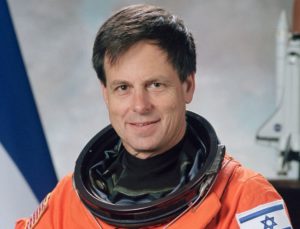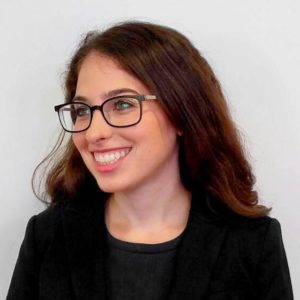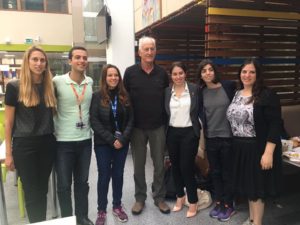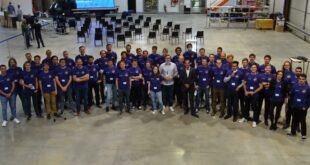SpaceWatch Middle East Chief Editor Helen Jameson speaks with a scholarship fund that was born out of tragedy but now helps dozens of young Israelis make a difference in space.
“Today was the first day that I felt that I am truly living in space. I have become a man who lives and works in space.” – Ilan Ramon, final entry in the journal he kept whilst in space.
On January 16, 2003, Ilan Ramon became the first Israeli astronaut in space. He was part of the ill-fated Space Shuttle Columbia mission STS-107.

Selected as a Payload Specialist by NASA, Ramon had previously been a Colonel in the Israeli Air Force. He had an illustrious career as a fighter pilot and had participated in many missions. As Payload Specialist, Ramon trained with NASA for his mission from 1998 until 2003. The STS-107 mission was dedicated to science and research and part of the payload was a multispectral camera. The crew conducted a successful mission during which they carried out around 80 experiments.
A piece of foam that had broken off during launch had damaged the thermal protection system on the leading edge of the orbiter’s left wing. On re-entry, the wing overheated and came apart. This catastrophic event led to the loss of all seven crew. Ilan Ramon and his fellow astronauts made the ultimate sacrifice in giving their lives to space exploration, science, and research.
Ilan Ramon was survived by his wife, Rona, and four children. His son, Asaf, was tragically killed just after graduating from the IAF Flight School whilst piloting an F-16 during a routine training flight. He had been the top cadet in his class.
Ilan Ramon Scholarship Fund
These two tragic events led to the establishment of the Ilan Ramon Scholarship Fund. In trying to come to terms with, and to make something positive come from such devastating events, Ramon’s widow, Rona, backed the creation of the Fund. The Fund aims to encourage young Israelis to become involved in space activities and to boost their development in STEM-related events and opportunities. It is also backed by some big names in the space industry including figures such as Jessica Meir, astronaut and an International Space University graduate.
Ramon Scholarship Fund founder Michael Potter says, “There is a continual struggle to achieve positive impact and to have inspiration rise from tragedy. This is the existential question that has always confronted the Jewish people. Of course this is difficult and perplexing; but poetry, beauty, art, achievement, excellence and the exceptional have always had to follow setback, and tragedy.”
To date, the Ilan Ramon Scholarship at the International Space University (ISU) has sent 55 post-graduate scholars representing over U.S.$1,000,000 in tuition and educational value. This gives a great opportunity for the Scholarship winners to experience graduate-level training as the future leaders of the emerging global space community. The Space Studies Program (SSP) is a nine-week program that covers the main space related fields.
This year marks the thirtieth SSP and it is currently being held in at the Cork Institute of Technology, Ireland, though its location changes every year. To give some statistics: this year, there are 112 participants, 150 visiting lecturers, 24 represented countries, 98 departmental activities, and 4 team projects in which participants will experience problem-solving and decision-making challenges. Not only this, the participants will also visit space-related institutes and organisations with a chance to interact with professionals in the space sector.

One of the scholarship awardees attending this year is Helen Wexler. Helen is Director of Jnext at the Jerusalem Development Authority. She is also a founder of one of the current finalists of the NASA’s Centennial Challenges: 3-D Printed Habitat Challenge.
After finishing her mandatory military service in Israel, Helen decided to become an architect and had experiences in various countries around the world, including China. However, she soon realised that perhaps architecture was not the route that she really wanted to take. “My final thesis in architecture was about 3D printing and the development of civilisation on Mars – almost the urban planning of Mars,” Wexler says. “Whilst I was working on it there just happened to be a call for proposals from NASA for 3D printing houses on Mars. So, I then called my friend Lior Aharoni, and we worked on our proposal together for fun.”
However, Wexler and her friend soon found themselves at the finals of the competition and were very surprised by the other competing teams. “We didn’t really understand the magnitude of the competition and who was involved and we couldn’t believe it when we got to the finals in New York and the other teams we were up against. We worked on this in Lior’s mother’s basement and I called in favours to make it work. We won an honourable mention in the first phase. We beat MIT and a couple of other serious teams.”
The experience on the NASA competition was Wexler’s first intersection with space and after learning about the challenges of building a habitat on another planet, she has found herself hooked. “I got into space by accident” says Wexler. “I was interested in urban planning and what it took to build a city from scratch and that is what made me choose space. Once I got into it, I got very interested in the geology of Mars and the atmospheric pressure and the climate and planning around this very challenging atmosphere.”
The next phase of the NASA competition was based around material engineering, which neither Wexler nor Aharoni were familiar with. However, through fortunate circumstances related to a new position that Wexler took up with a government investment fund for the Jerusalem Development Authority, Wexler and Aharoni are hoping to be able to continue in the competition. They have partnered with two chemists specialising in new materials for 3D printers and were able to submit an entry. They have also had to show a new level of determination and resourcefulness in entering this new phase. “Two weeks before the deadline our printer broke and we had to improvise” says Wexler. “We had to build our own printer and we didn’t have an extruder so we had to use a pasta machine! We borrowed everything from a robot to chemicals to the pasta machine! We are working on tightening things up and hopefully we will continue in the competition.”
Whether she continues in the competition or not, Wexler will be using her 3D printing talents to work with another Ramon Scholarship awardee, Roy Naor, whose vision is to create a visitors’ centre in Israel that showcases space. Wexler would be the technology provider for the centre. This collaboration between the Ramon Scholarship awardees demonstrates how they are working to move things together on a national level.
“The SSP is fantastic. It’s really helpful and instrumental in figuring out the next steps of our project. I’m meeting great people and learning so much every day” says Wexler.
Developing NewSpace in Israel

Speaking of the national level, the space sector in Israel is blossoming. With a heavy emphasis on research and development (R&D) and innovation, Israel is excelling in space. However, as Wexler points out, the focus is still very much on space in defence. “Traditionally, in Israel the strength has been in military space and that is where most of the R&D budgets are going. The next step for Israel is how to develop a NewSpace industry,” she says. Space has the potential to become a major growth engine for the Israeli economy but more needs to be done to encourage private investment in commercial space business.
The Google Lunar XPrize has been an inspiration to many in Israel. The competition demands competitors to land a spacecraft on the Moon, move it 500 metres across the lunar surface and send HD video and images back to Earth. It piqued the interest of three young space engineers and led to the formation of SpaceIL. SpaceIL is a non-profit organisation, and although it is no longer competing for the XPrize, it has brought about a national mission to use the story of the spacecraft to ‘create an educational impact amongst the next generation in Israel and around the world’ through a new ‘Apollo Effect’. SpaceIL hopes to inspire the next generation in Israel and elsewhere to think differently about science, engineering, technology and maths. Israel excels in technology, but it faces a skills gap and a need for many more scientists and engineers.
SpaceIL has already presented to over 50,000 children in classrooms all over the world in a bid to inspire and motivate through the promotion of science and scientific education, to ensure that Israel will continue to live up to its reputation for excellence in these fields. The team is developing curriculum, videos and online content to reach as many young people as possible.
“The Ilan Ramon Scholarship project is a central part of Israeli space talent and leadership decision-making,” says Michael Potter. “The remarkable success of the Google Lunar X-Prize team Space IL, SkyFi, and NSL Satellite and many other innovative and dynamic projects are directly traceable to the Ilan Ramon Scholarship initiative.”
We are sure that Ilan Ramon would have been extremely proud of his legacy.
Original published at: https://spacewatch.global/2017/07/spacewatchme-oped-ilon-ramon-scholarship-overcoming-adversity-to-inspire/
 SpaceWatch.Global An independent perspective on space
SpaceWatch.Global An independent perspective on space

